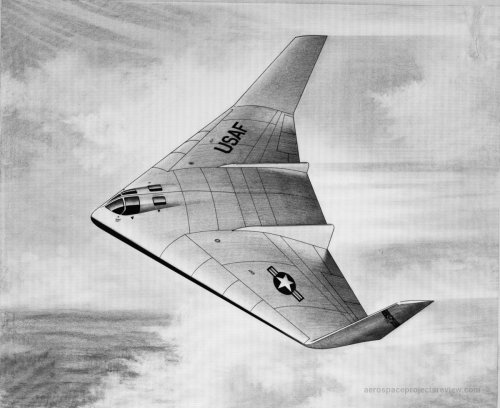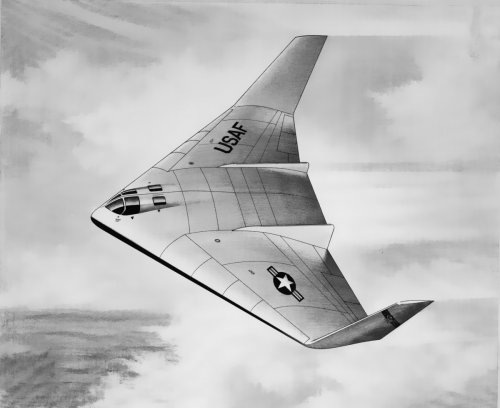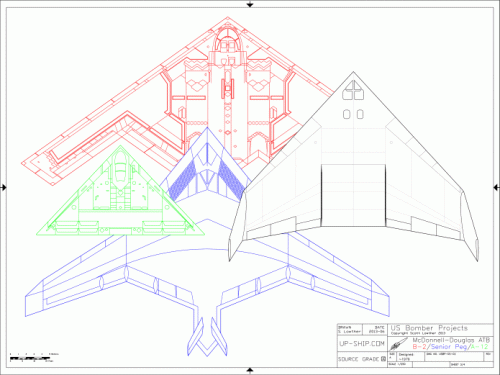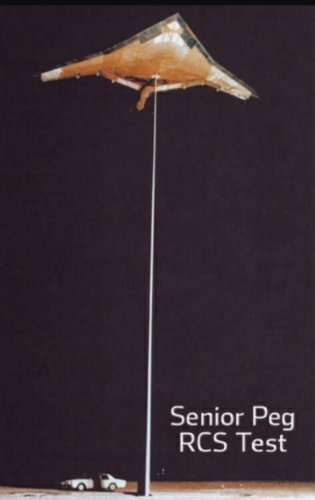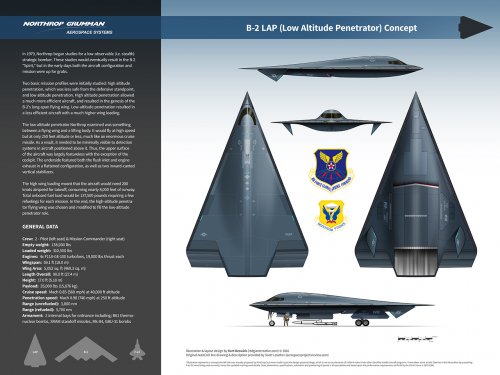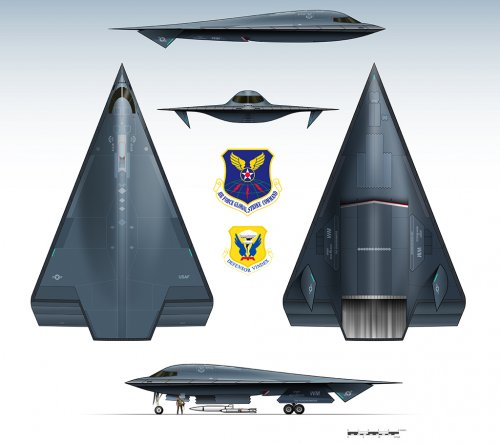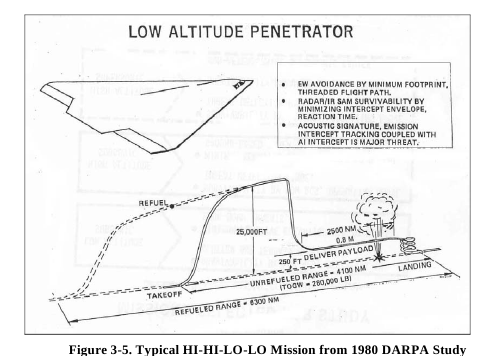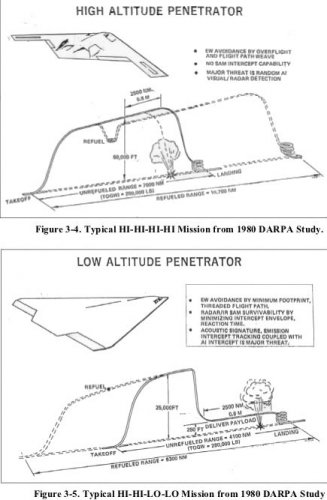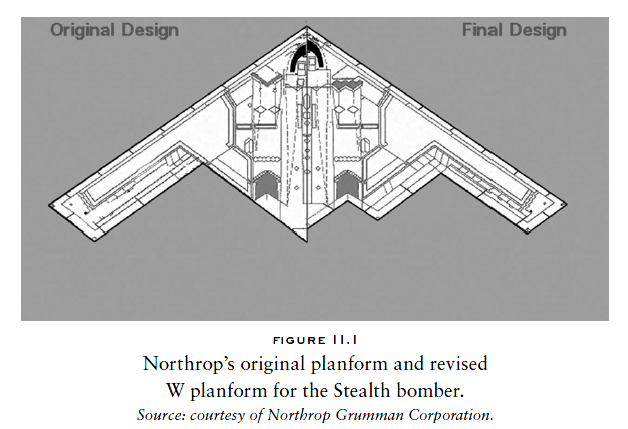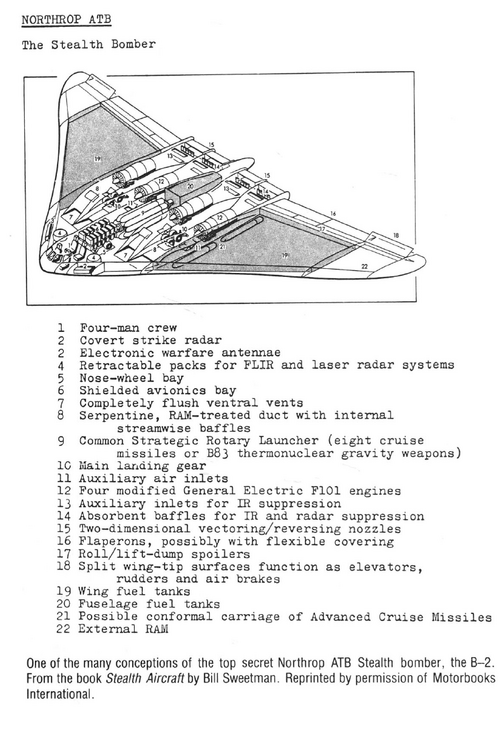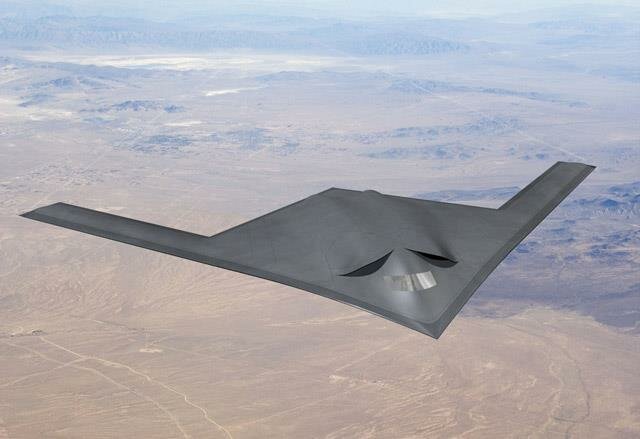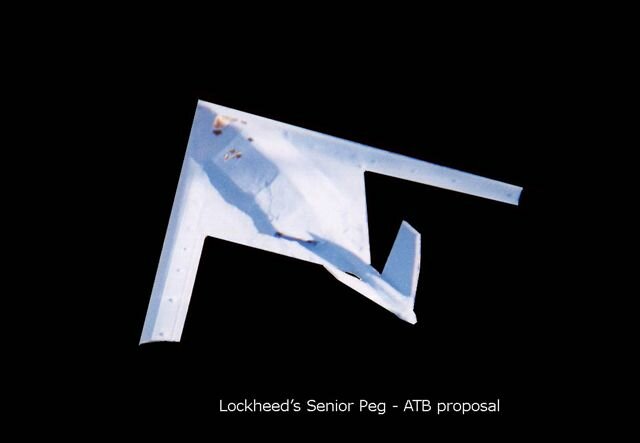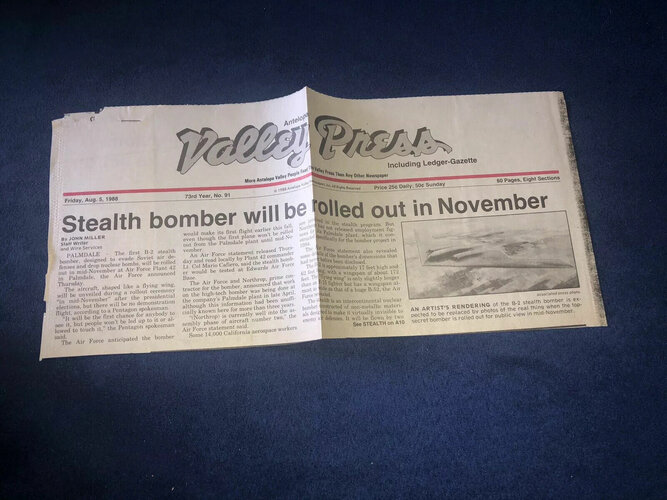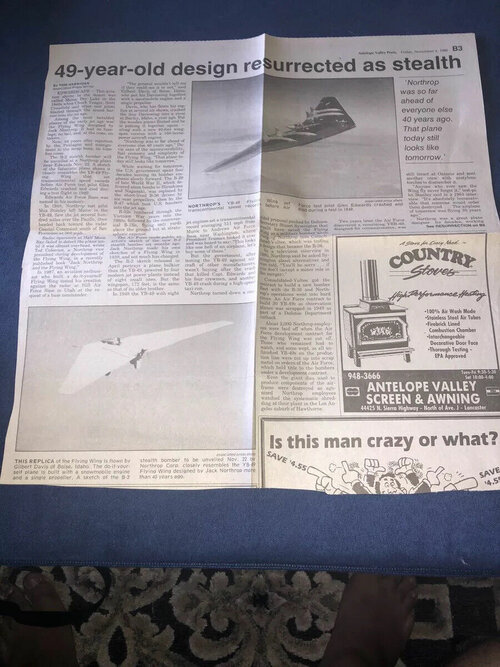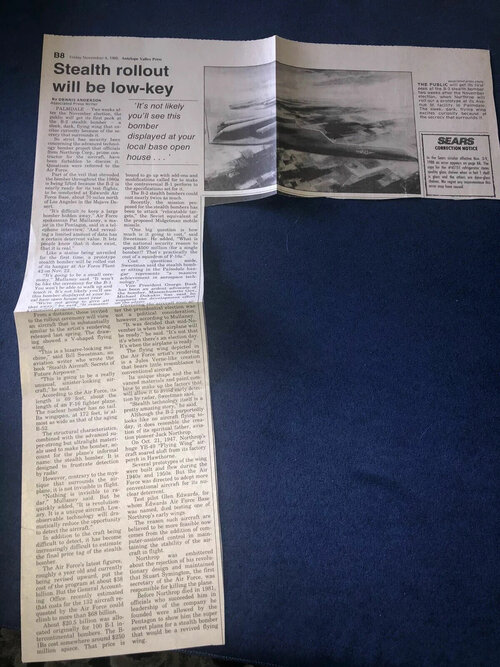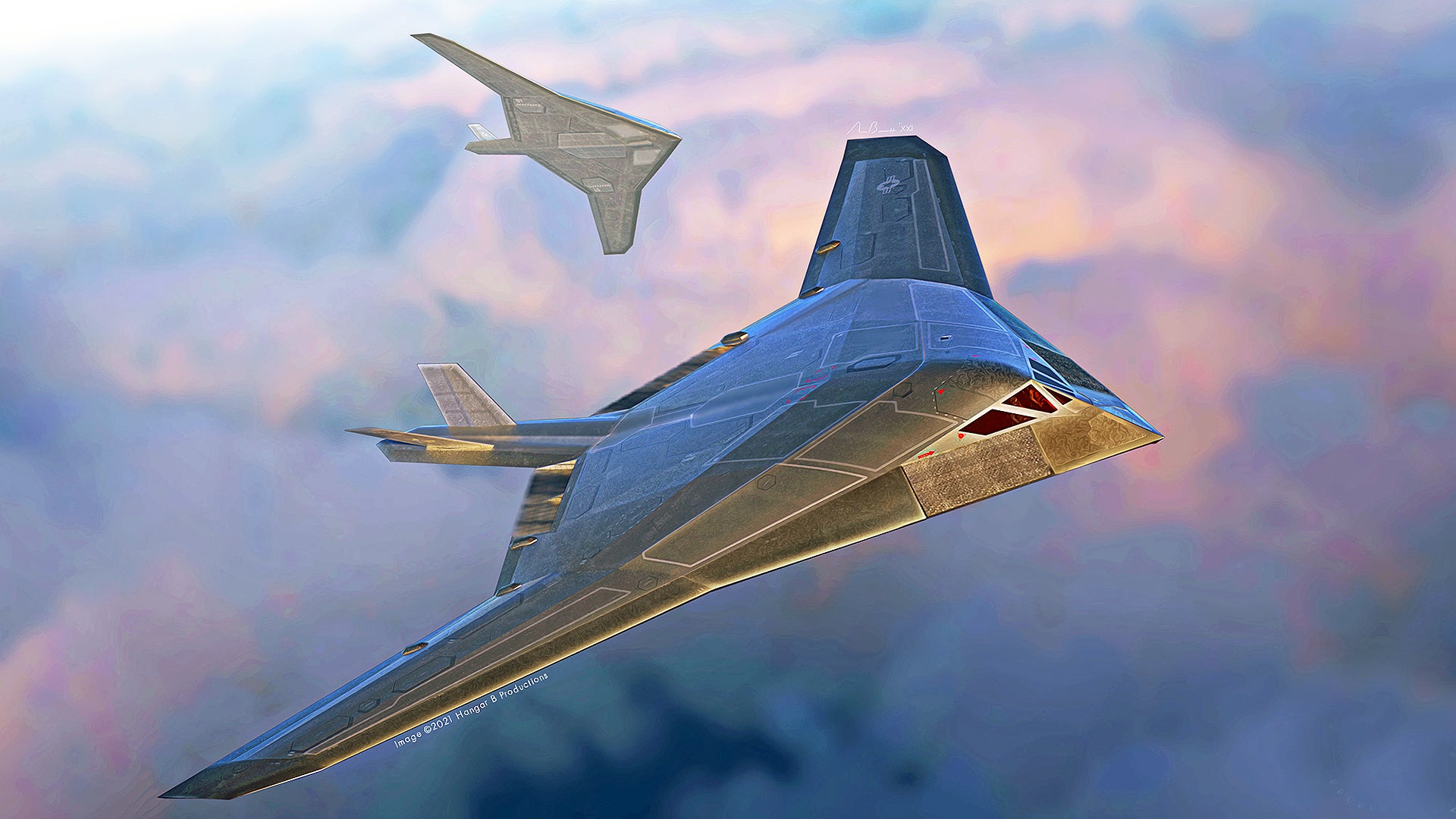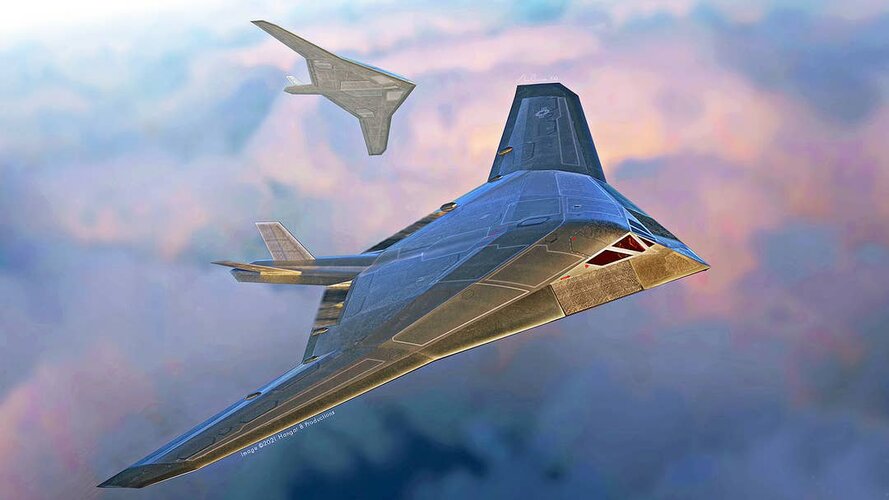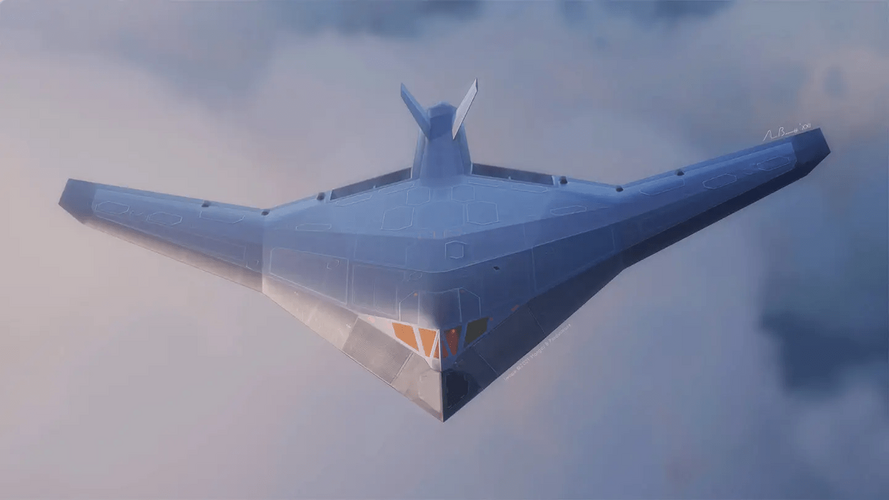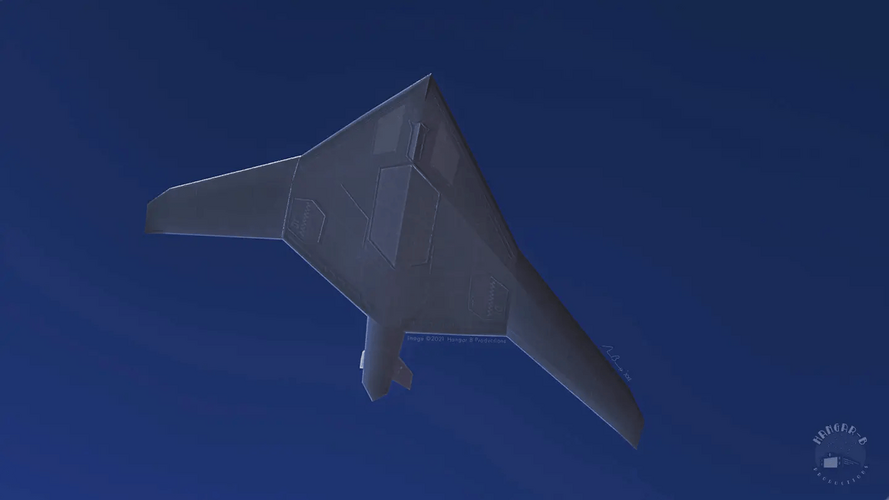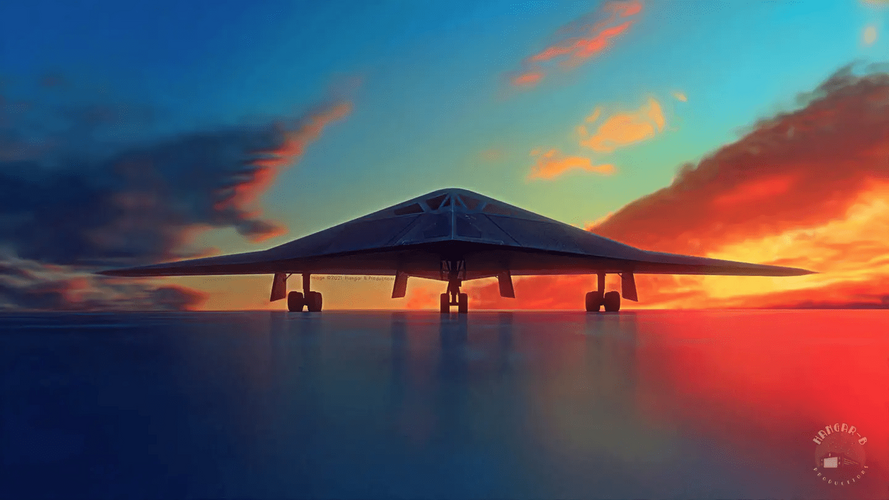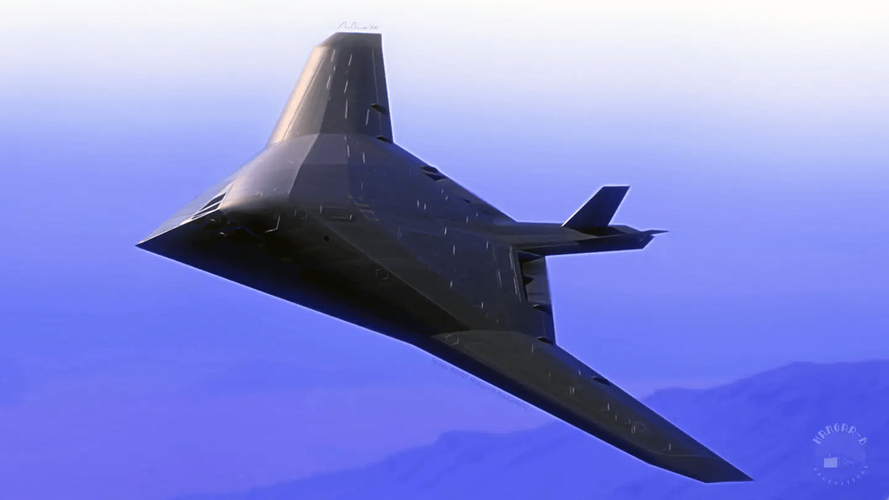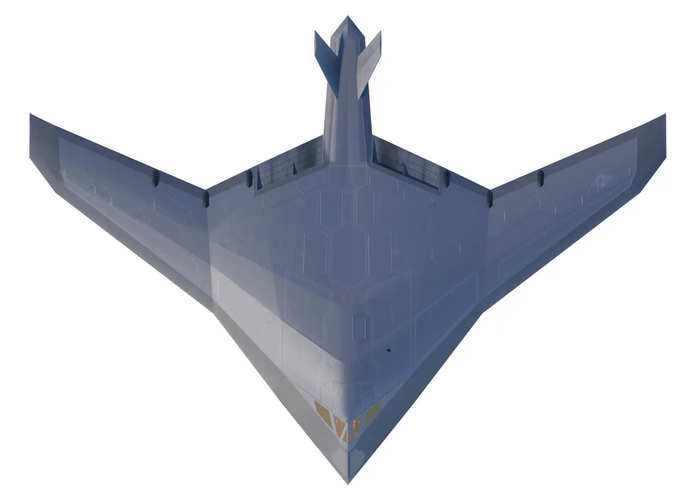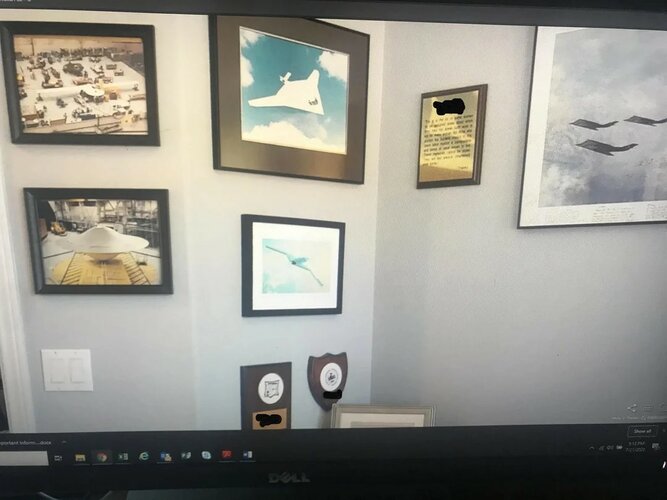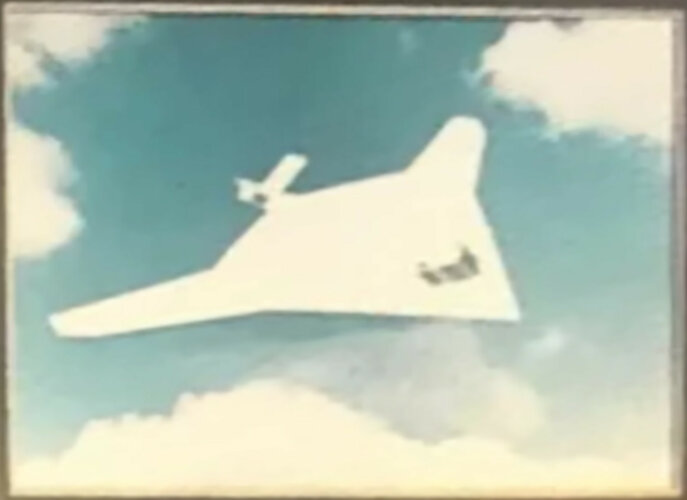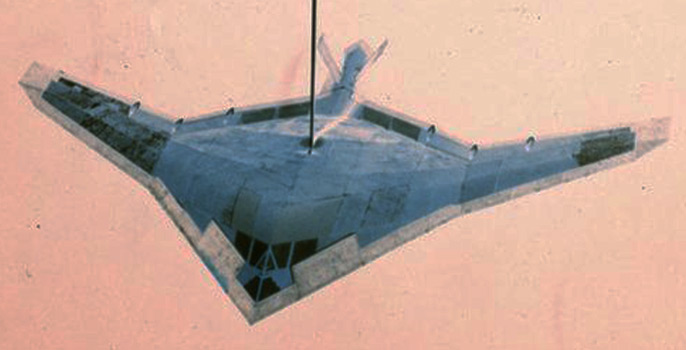Apollo Leader
ACCESS: Restricted
- Joined
- 22 May 2007
- Messages
- 34
- Reaction score
- 11
quellish said:Lockheed had the ATA-B, a larger design based on the ATA-B (what has been seen in a photo mounted on a pole), and their ATB proposal. The two ATA-B designs were heavily influenced by SENIOR TREND. As the ATB requirements evolved it was clear that Lockheed's ATA-B based designs would not be competitive and they ended up with a design that was very much like the Northrop design at the time and of a similar size.
The picture of the faceted, flying wing RCS pole model that is in this topic thread along with being published in the F-117 book by Yancy Mailes and Tony Landis I thought was the final Senior Peg design. It meets Ben Rich's description (from his autobiography) of a flying wing with a small fuselage extension out the back for supporting a small v-tail. Did Lockheed come up with a design after that point that beared an even closer resemblance to Northrop's winning ATB design? That might explain the comment in Ben Rich's autobiography about an Air Force officer with the ATB program asking the question of why Lockheed had in their possession a model of Northrop's ATB.
Furthermore, are there any confirming sources on where the Senior Peg design that is on the Dreamland Resort website falls into the picture? The extension out the back end supporting a v-tail suggests that it might be a Senior Peg design, but it also bears a resemblance to the F-117 so it might possibly be an ATA-B design. It's difficult to gauge the true size and number of engines on that aircraft.

